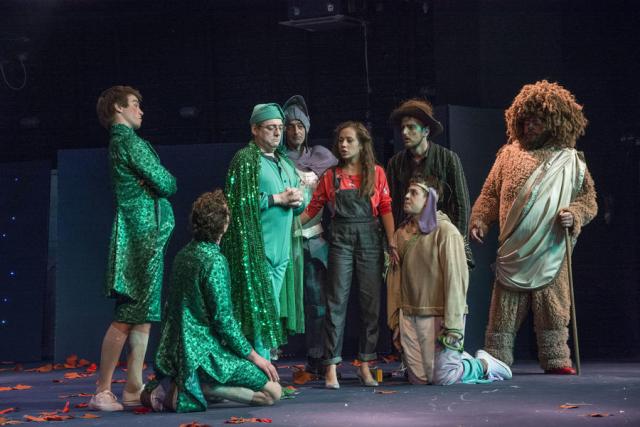
Serbian playwright Milena Depolo, encouraged by Frank L. Baum’s comments that it’s time for new “wonder tales” to replace old-time fairy tales, has written what she hopes is a modernized fairy tale. Though faithful to Baum’s story, she’s tried to present a Dorothy of today and allied characters with contemporary meanings of being smart, brave, loving. None of the characters is perfectly good or evil. Dorothy begins as immature. In Oz, far from her home and its values, she has a hard time explaining Kansas to those she meets. But her journey to the Wizard matures her and makes her “come to realize.” Toto may be full of mischief but an enabler of her most important journey through life. Like Dorothy, the Friends she picks up change as they go through danger. For instance, Scarecrow hasn’t known how to do his job. The Tin Man had lost a girl friend and has forgotten how to love. The Lion, as a bully, tried to keep full power over his part of the woods. All learn about their selves and how they must keep learning, loving, using strength for the good. When they are almost stopped by being put to sleep on the way to Oz, Scarecrow wakes them because, not being human, he couldn’t smell sleep-inducing flowers. The Munchkins number only two, but they are not small in any way. They encourage Dorothy so well that the audience cheered them both when I saw them. The Witches are portrayed as obsessed, made possible a great deal by those who’ve obeyed them. The phony Wizard is shown to be a con man, able to fool the populace — including the Wicked Witch of the West. She’s wanted to possess Dorothy’s silver slippers to give her equal power with the Wizard, whom the Wicked Witch is sure is more powerful than she is. The Wicked Witch sang of a new dawn coming while preferring nightmares. The audience obviously did not agree with her. I felt there might have been more interaction with these children, at least in the finale, when Dorothy was told she could go home if she still sincerely wished to. But the happy ending was certainly accepted. Because few but effective scenic elements narrowed the width of the stage action, the show was constantly on the move. Costumes quickly identified the various characters. Music was pleasant but unmemorable, as were its uses. The show was more of a comedy with music than productions like the film or the African American theatrical versions of “The Wizard of Oz.”
